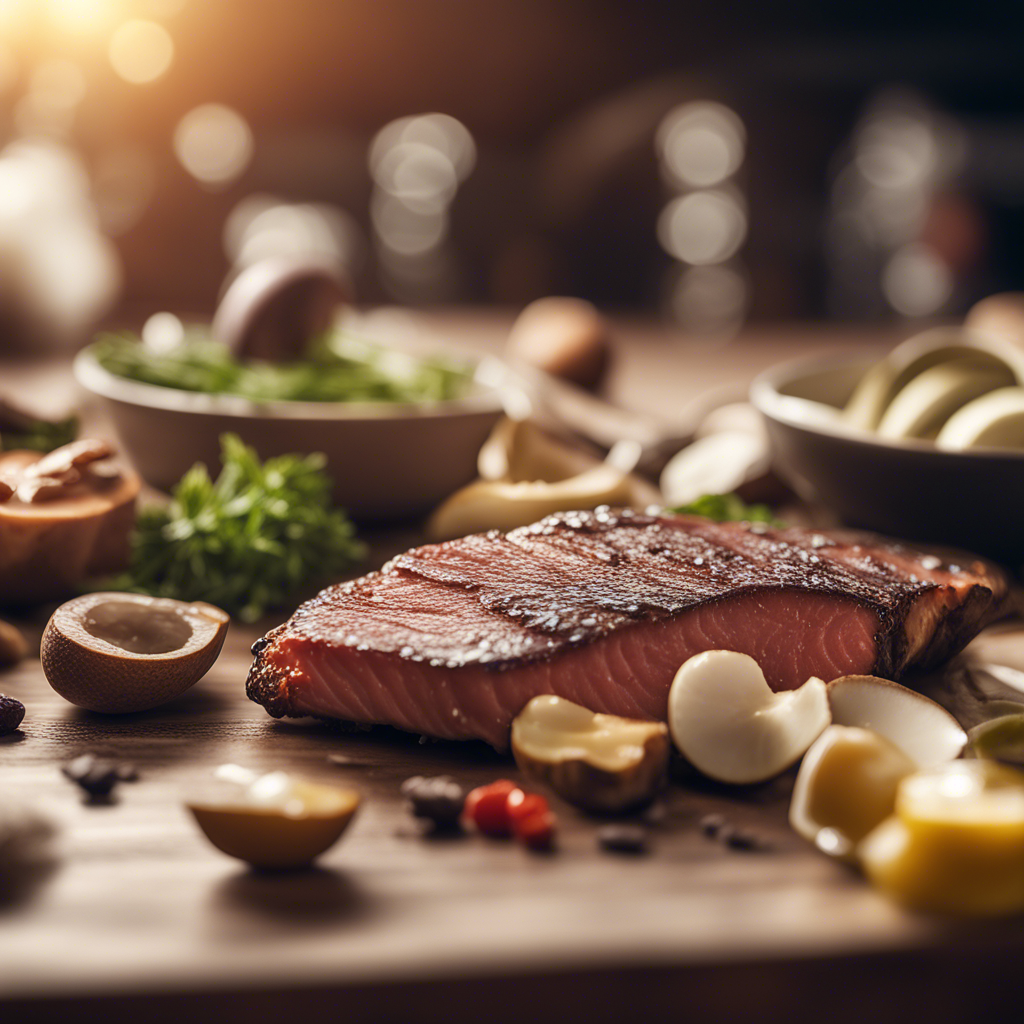Keto vs. Paleo: Which Diet Burns Fat Faster? (Science-Based Comparison)
In the realm of weight loss and managing body composition, Keto and Paleo diets have carved out significant niches. Their popularity rests on claims of efficient fat burning and muscle gain while maintaining overall health. While both diets advocate low-carb intakes, their core nutritional philosophies diverge. This article undertakes a detailed exploration of these two fat-burning diets, analyzing their mechanisms, effectiveness, and overall benefits to determine which might offer a faster route to sustained weight loss.

Choosing the right diet is not merely about quick results; it’s about aligning with a lifestyle that can sustain health and well-being. For individuals pondering whether a ketogenic journey or a paleo path aligns with their weight management goals, understanding the science behind these diets is crucial. Both Keto and Paleo diets eliminate processed sugars and carbohydrates, emphasizing natural foods, but differ in their focus and execution strategies. This science-based diet comparison unveils the nuances that distinguish these regimens and highlights their individual contributions to fat loss.
The Keto Diet: Unpacking the Mechanism and Benefits
Understanding the Ketogenic Diet
The ketogenic diet, commonly referred to as Keto, is a high-fat, low-carbohydrate diet designed to shift the body’s energy source from glucose to fat. This metabolic state, known as ketosis, occurs when depleted carbohydrate reserves prompt the liver to convert fat into ketones, which serve as an alternative energy source.
The effectiveness of the ketogenic diet benefits from its ability to alter the body’s metabolism significantly. By reducing carbohydrate intake to about 5-10% of daily calories, Keto encourages the burning of stored fats, making it a potent option for weight loss and rapid fat burning. It’s particularly appealing to those seeking a vegetarian diet for weight loss and muscle gain, thanks to its reliance on high-fat, plant-based foods like avocados, nuts, and seeds.
Practical Applications and Real-World Results
Adherents of the ketogenic diet often report significant initial weight loss, attributed to both fat loss and water reduction. While transitioning into ketosis can pose initial challenges—such as the “keto flu”—many find that implementing a strict meal plan mitigates these issues. A typical day might involve meals like scrambled eggs with spinach and cheese for breakfast, a lunch of salmon and avocado salad, and a dinner featuring chicken stir-fried with broccoli and nuts.
Scientific studies have supported the ketogenic diet’s effectiveness in promoting fat loss, particularly in reducing visceral ab fat, a key factor in metabolic health. This characteristic makes it an attractive option for those with specific health concerns related to excess abdominal fat.
The Paleo Diet: Ancestral Nutrition for Modern Fat Loss
The Philosophy Behind Paleo
The Paleo diet, often framed as a return to the dietary habits of early humans, prioritizes whole, unprocessed foods like fruits, vegetables, lean meats, and seafood. The diet excludes grains, dairy, and legumes, reflecting the presumed eating patterns before the advent of modern agriculture. This approach is believed to best align with the human body’s genetic makeup, facilitating natural fat loss and improved metabolic functions.
The paleo diet fat loss strategy centers around the consumption of naturally occurring foods, encouraging nutrient density over calorie counting. By focusing on high-quality proteins and healthy fats, Paleo aims to stabilize blood sugar levels, reduce inflammation, and enhance satiety, which collectively support effective fat burning.
Implementing Paleo for Effective Fat Loss
For those committed to a Paleo regime, meal planning emphasizes variety and balance. A sample menu might include a breakfast of mixed berries and nuts, grilled chicken with mixed greens for lunch, and a dinner of salmon with roasted vegetables. The inclusion of sweet potatoes and avocados supplies necessary carbohydrates and healthy fats without compromising the diet’s low-carb ethos.
Numerous studies have highlighted Paleo’s benefits in reducing body fat, often attributing results to its elimination of processed foods and sugars. Adopting a Paleo lifestyle can also contribute to enhanced muscle gain due to its high-protein content, appealing to those pursuing both weight loss and muscular development.
Keto vs. Paleo: Comparative Effectiveness in Fat Burning
Mechanisms of Fat Loss
The comparative effectiveness of Keto vs. Paleo in fat loss hinges on their unique mechanisms. While both promote fat burning, Keto induces ketosis for rapid weight loss, while Paleo emphasizes a hormone-regulating diet. The ketogenic approach directly targets body fat, efficiently converting it into energy once ketosis is achieved. Conversely, Paleo’s higher fiber intake promotes digestive health and prolonged satiety, often leading to gradual but sustainable weight loss.
Research indicates marginally faster weight loss results with the ketogenic diet, particularly in the initial stages. However, the individual’s metabolism, adherence level, and long-term sustainability must be factored in when comparing these fat-loss strategies.
Sustainability and Long-Term Results
The durability of fat loss results also distinguishes these diets. Keto, with its strict carbohydrate limitations, can often be challenging to maintain over long periods. In contrast, Paleo’s emphasis on whole foods and flexible carbohydrate sources typically proves easier for continued adherence.
Both diets, however, stress the importance of creating a caloric deficit and incorporating physical activity for optimal results. For individuals seeking a vegetarian diet for weight loss and muscle gain, both approaches can be adapted with plant-based versions, though careful meal planning is required to meet nutritional needs.

FAQs on Keto and Paleo Diets
Which diet is easier to maintain: Keto or Paleo?
Paleo may be easier for long-term maintenance due to its flexible inclusion of fruits and vegetables, making it less restrictive. Keto requires careful monitoring of carbohydrate intake to maintain ketosis, which can be challenging for some individuals.
Can vegetarians effectively follow a Keto or Paleo diet for weight loss?
Yes, both diets can be adapted for vegetarians. Ketogenic vegetarians can focus on high-fat plant foods like avocados and nuts, while those following Paleo can include eggs and dairy alternatives. It’s crucial to ensure adequate protein intake from plant-based sources for muscle gain and overall nutrition.
Which diet promotes faster muscle gain: Keto or Paleo?
Paleo may offer a slight edge for muscle gain due to its higher protein content from lean meats and fish, which supports muscle repair and growth. However, with careful planning, a ketogenic diet can also be effective, especially when incorporating targeted carb cycling to support high-intensity workouts.
Are there any potential health risks associated with these diets?
Both diets can pose health risks if not properly managed. Keto might lead to nutrient deficiencies and increased cholesterol levels due to high fat intake, whereas Paleo could lack sufficient dairy calcium and grains’ essential nutrients. Consulting with a healthcare provider before starting any diet is advised.
Conclusion: Choosing the Right Diet for Your Goals
The decision between Keto and Paleo hinges on individual lifestyle preferences, health goals, and dietary restrictions. For those focused on rapid fat loss, the ketogenic diet’s ability to quickly drop weight might hold significant appeal. Alternatively, for long-term health and manageable lifestyle changes, Paleo’s whole-food approach provides a balanced pathway to fat loss.
Ultimately, both diets emphasize the elimination of processed foods and sugars, advocating for more natural, nutrient-dense food sources. The success of either diet largely depends on personal adaptation, commitment, and a balance of nutrition and exercise. Individuals should assess their health profiles and consult professionals when selecting a diet to best match their fat-burning goals.
Suggested Video Topics
- Comparing Low Carb Diets: A Deep Dive into Keto and Paleo
- Paleo Meal Planning for Beginners: A Step-by-Step Guide
- Understanding Ketosis: The Science Behind the Keto Diet



